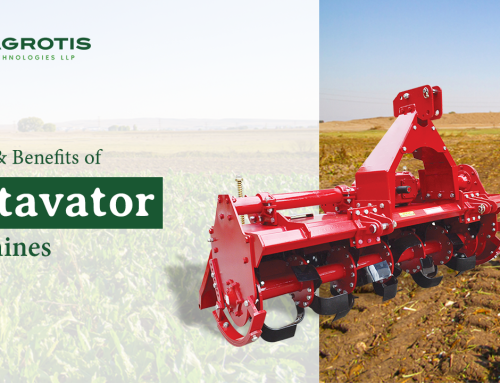Millet is one of the most important crops in the world. It is a versatile crop that can grow in a variety of conditions and is an important source of food and income for millions of people worldwide. As food demand increases and the world’s population grows, it is crucial to find a way to increase the productivity of millet cultivation.
In recent years, there has been a shift towards mechanization in millet farming.
Mechanization in millet farming involves the use of machinery and equipment to perform farming tasks, such as planting, harvesting, and processing. It includes equipment such as tractors, harvesters, planters, and threshers, among others. These machines help in planting, harvesting, threshing, and other farming activities. Mechanization in millet farming is a step towards modernizing agriculture and making it more efficient.
Benefits of mechanization in millet farming:
Mechanization in millet farming offers several benefits to farmers, consumers, and the environment. Here are some of the key benefits.
1 – Increased Productivity: One of the key benefits of mechanization in millet farming is increased productivity, allowing farmers to produce more crops in less time. It can also help reduce the cost of labor, making it easier for millet farmers to compete with larger farms. It can also help in carrying out farming activities in a short time, which can lead to more production.
2 – Improved Efficiency: Mechanization in millet farming can help save time and reduce the cost of production. It can also help farmers complete farming activities in a timely manner, allowing them to focus on other aspects of farming.
3 – Improved Crop Quality: Mechanization helps farmers ensure that their crops are harvested at the right time, and with the right equipment, resulting in higher crop quality. It also helps reduce crop damage during harvesting and handling.
4 – Less Physical Pain: Manual farming methods can result in injuries and other health issues over time. By using mechanized equipment, farmers can reduce their physical workload and minimize the risk of injuries, leading to a healthier and more sustainable farming workforce.
How mechanization is transforming millet farming:
1 – Land preparation: Mechanization can be used to prepare the land for planting millet, by using machines such as ploughs and cultivators. These machines can help to break up the soil and create sustainable land for planting. Mechanized land preparations can save time and reduce labor costs, especially for large-scale farming operations.
2 – Improved seed planting: With modern machinery, farmers can plant seeds more efficiently and accurately.
3 – Efficiency harvesting: Modern harvesting equipment, such as harvesters and threshers, can harvest millet more efficiently with less labor. This equipment also reduces crop losses and minimizes damage to the crop during harvesting.
In conclusion, Mechanization in millet farming can offer a number of benefits for farmers and the environment alike. It is a promising step towards sustainable farming. Ultimately, by embracing mechanization, millet farmers can improve their operations & maximize their profits.





